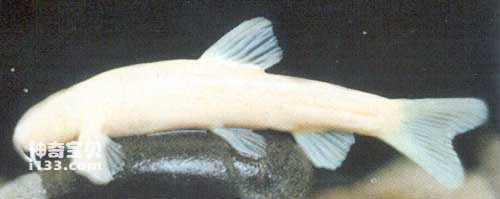There are some small fish living in caves, well bottoms and other groundwater in many places around the world. These cave fishes have become a branch of the radiated evolution of fish due to their special living environment and unique structures adapted to that environment. For cave fishes, no matter how related they are or how far they are geographically isolated, their basic characteristics are that their eyes are reduced or degraded; their bodies are pigmentless, pink, or translucent, and their spines and internal organs are clearly visible. Most have slender bodies, often only 5-10 cm long. The scales on the body surface are small, sparsely arranged or completely buried under the skin; they are sensitive, with developed tentacles or derived sensory organs; therefore, they are also commonly known as blind fish, eyeless fish or transparent fish.

The appearance of blind fish is related to caves. Caves are rich in food and can provide safe habitats for certain animals to survive. The ancestors of blind fish were originally fish outside caves. They had eyes and colors on their bodies. They did not like dark caves. When they accidentally come to an underground lake, underground river or underground pool, because they are not used to the living environment there, they will quickly leave and return to the rivers, lakes and pools outside. However, if the entrance of the cave is suddenly blocked by collapsed rocks and soil outside the cave, these fish cannot escape and have to settle in the black hole. They live in this dark environment without light from generation to generation, and gradually adapt to it from being unaccustomed to it. , the eyes gradually degenerate, so that they are completely covered by a layer of skin folds. The body is not exposed to light, and the pigment on the body surface gradually fades, turning into a translucent "glass fish". In order to adapt to the new living environment, they gradually acquired new survival skills. They are no longer strict on environmental temperature, can endure hunger for a longer period of time, have more developed and sensitive whiskers, and can reproduce offspring in a self-contained system. life cycle activities.
Blind fish are relatively common in the world and are found in the Americas, Europe, Africa, and Asia. The first discovery was the resident cave fish, the blind killifish, recorded in the United States in 1842. Subsequently, they were also discovered in Cuba, Brazil, Africa, Asia and other places. Asia is widely distributed in Iran, Iraq and other places. Since my country first reported catching a blind fish in a cave in Jianshui, Yunnan in 1976, new blind fish have followed one after another. Later, they were caught in Wuming, Lingyun, and Leye of Guangxi, Gejiu and Yiliang of Yunnan, Longshan of Hunan, and Guizhou. Eight species of blind fish have been discovered in other places.
Most of the caves where fish live are made of limestone or basalt, and the rock mass gradually develops into caves through erosion. The ages of caves and undercurrents are relatively old. For example, the caves and underground rivers in Yiliang, Yunnan are distributed in the Pre-Sinian carbonate strata about 600 million years ago. The caves were formed after the Yanshan Movement, and fractures promoted the formation of the caves. But the age of cave fish is much later, and it is not directly related to the geological age of the cave. Fish carry out their life cycle activities in caves in flowing or still water without sunlight, and it is rare for more than two kinds of fish to coexist.
animal tags:
We created this article in conjunction with AI technology, then made sure it was fact-checked and edited by a Animals Top editor.